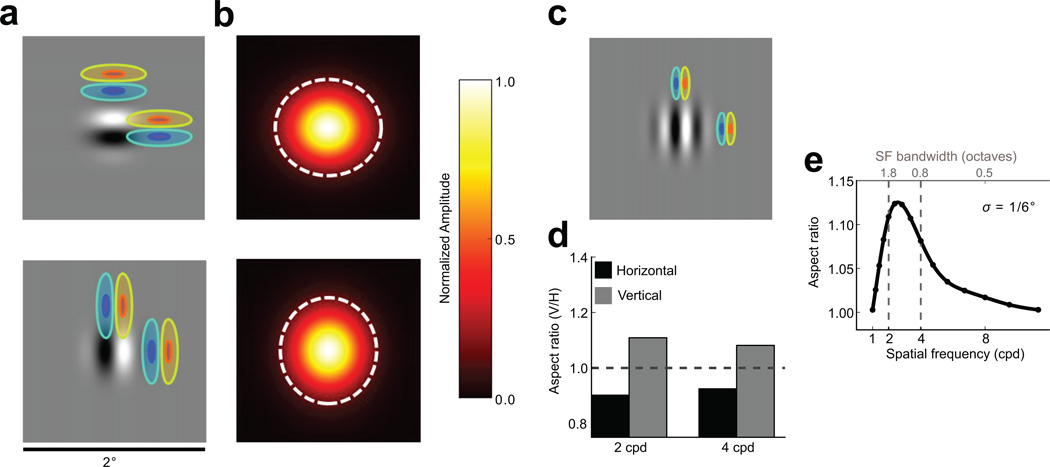Figure 2.
Predicted effects of elongated receptive fields on the spatial distribution of V1 population responses. a) Receptive fields (overlaid contours) well-tuned to a stimulus (grayscale image) and displaced by equal distances in collinear and orthogonal directions. The stimulus overlaps more with collinearly than orthogonally displaced receptive fields, eliciting cortical population responses elongated along the direction of the Gabor orientation. b) Population responses predicted for the 2 cpd Gabors depicted in (a) using a retinotopic V1 model, shown in visual field coordinates. The dashed white ellipses indicate the 3σ contour of a Gaussian fitted to the population response. For a simulated population of neurons with receptive field parameters based on physiological measurements, the population response is elongated along the direction of carrier orientation. c) Effect of carrier spatial frequency on cortical response elongation. Because receptive field size is inversely correlated with peak spatial frequency38, increasing spatial frequency leads to activation of neurons with smaller receptive fields, reducing the effect of receptive field elongation on the cortical response. d) Response aspect ratios predicted by the V1 model for 2 cpd (left) and 4 cpd (right) Gabor stimuli with vertical and horizontal carriers. e) Predicted response distortion as a function of carrier spatial frequency for a Gabor with a fixed envelope size (σ = 0.167°). The abscissa at the top of the panel indicates the spatial frequency bandwidths of the Gabor stimuli, and the dashed lines represent stimuli used in the physiological experiments.

